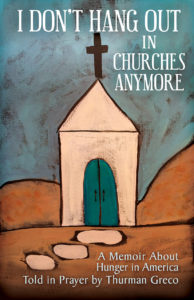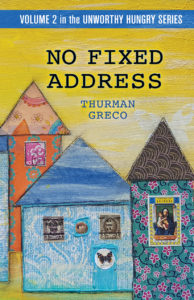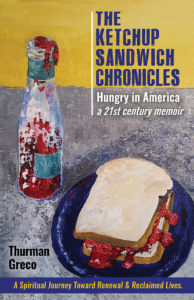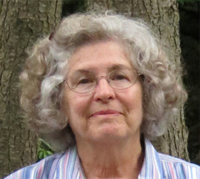November 27, 2020 at 4:24 pm
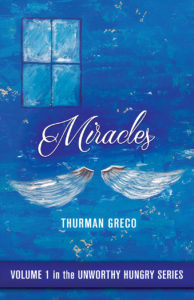
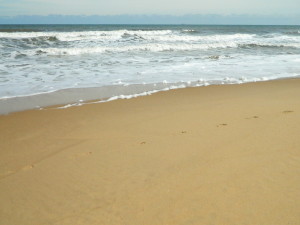
Losing weight can be stressful and challenging for even the best of us. Whoever said that our spiritual journeys would all be a piece of cake?
But, it doesn’t have to be as hard as you thought it would be.
For many of us, the first few pounds are a lot like a miracle! Where did they go?
They disappear – just like the guy in the diet book said they would.
Then…the pounds stop disappearing even though there’s no cheating going on. What happened?
You hit a weight-loss plateau, that’s what. It’s like your body hit the pause button.
Well, whatever it feels like, this weight loss slow-down isn’t as bad as you think.
While your body doesn’t seem to be losing weight for the moment, keep on dieting.
Why?
Things are happening! Good things!
Your body is adjusting to its new journey.
Take your wins where you can! Celebrate them.
You may experience symptoms of better health. It doesn’t take all that many missing pounds to feel different.
You may have less discomfort after a meal, for starters.
Are your knees working better? Maybe you don’t have much knee pain anymore. This is good. This is what happens when you lose a few pounds.
What about your blood pressure? You may notice that you’ve lowered some numbers. Your BP scores may be lower now.
Are you Prediabetic? Diabetic? Shedding a few pounds helps those scores, too.
Are you sleeping better? When you lose a few pounds, your sleep generally becomes more restorative.
What about your energy? You should have more energy for the things you like to do. And, admit it, you’re feeling younger, too.
But, however you feel after losing a few pounds, stay the course! Everyone’s body is different. Stick with your diet and don’t give up.
In time, your numbers will move again. You’ll see, it will be worth the effort.
Thanks for reading this article.
Please refer it to your preferred social media network.
Thanks
Thurman Greco
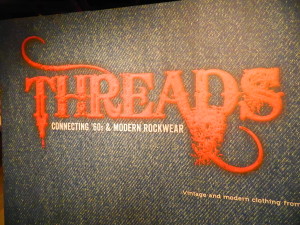
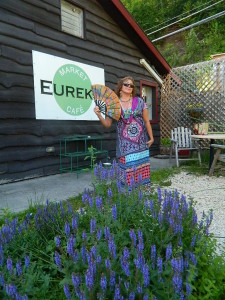
November 21, 2020 at 1:05 pm
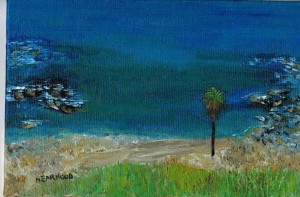
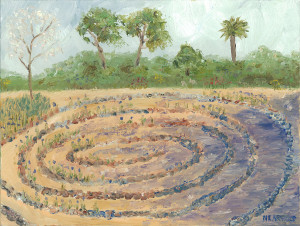
When you think about dieting, you probably don’t even think about water. Instead, you think about things you’re going to give up in order to release those unwanted pounds.
Before you even decide many details of your diet, explore what you’re going to drink…and why. You may find that you’re thinking MORE and not Less.
For starters, drink more for a successful diet. Think more ounces, and cups, in glasses, bottles, and cans.
But…more and not less of what?
For starters, drink less tea, carbonated drinks, alcohol, and 100% fruit juices. Better yet, skip anything with a calorie.
Now is the best time to eliminate carbonation. Break the diet soda pop drink habit today!
Choose water!
If you’re stuck on diet sodas, you may discover many options you never considered before. It may take several days or weeks even to try out all the new found options just waiting for you to try on grocery shelves.
As you sample the many drinks out there, avoid artificial sweeteners if you can. These artificial sweeteners haven’t been proven to support your weight loss.
As you test different products, put them in categories because there are so many choices.
Water is Your First Choice. Not all water tastes the same. You’ll have fun choosing your favorite.
For starters, put waters in two basic categories: natural spring water and purified water. Personally, I went for the purified waters to begin with. I found so many delicious spring waters that now I keep several different waters on my pantry shelves.
There are many, many infused waters to choose from.
Also on this first list, include strained homemade broth.
Your Second Choice is Water with Stevia-Sweetened Flavor Drops. These products are essentially products with liquid water enhancers added.
Decaffeinated herbal teas come in the water-with-enhancers category.
Flavored Drinks sweetened with Stevia are your third choice.
Artificially flavored sweetened beverages make up your fourth choice. This choice includes sugar-free popsicles, sugar-free gelatin and any broths with MSG.
This last category is your jettison section.
Don’t even consider diet soda pops, seltzer waters, sugar-sweetened beverages, fruit juice, milkshakes, and fancy coffee drinks. Erase them from your consciousness.
Discovering your new favorite drink may take some persistence and a few trips to the super market. Don’t rush this search. This is an important discovery for you. You’re searching for a beverage to live with.
Take all the time you want.
I shopped in my super market for years and never really paid a lot of attention to what waters were sitting on the shelves.
Recently, I went to my favorite super market and looked at all the different bottled/canned waters out there. This time, I really looked at what was on the shelves. What I saw amazed me!
It seemed my new diet was opening up a whole new world for me…a world of waters!
Thanks for reading this blog post. Please share it on your favorite social media network.
Thurman Greco
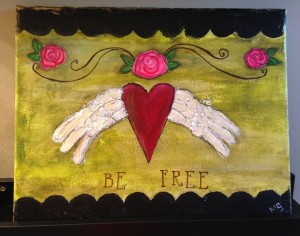
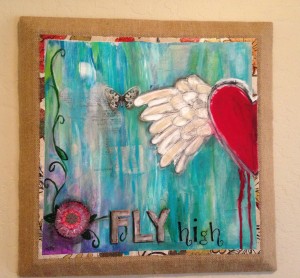
November 5, 2020 at 1:14 pm
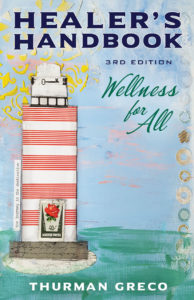

You need spiritual work because your weight loss diet brings change – physical, mental, emotional, and spiritual change.
Success is easier when you speak to your inner self and ground your core in the new goals you’ve set for your spiritual work.
Now is a good time to embark on this spiritual journey. Choices, problems, challenges overwhelm us daily with information and current events. Everywhere we turn, people, animals, plants, air, water, and the earth even, cry out for help. We are drowning in all the needs for healing.
Spiritual work looms large.
To understand what is swirling around you, go to your spiritual center. This is the source of your strength, grounding, and peace. Here is where you’ll find your truth, your love and the core of your focus. This is where you’ll find weight loss success in your spiritual work.
This is where you’ll realize how much easier your life will be when your physical body is no longer weighted down with extra pounds. For some of us, there are pounds and pounds of protection to release.
Guided meditations can be a positive experience for you now. I’ve relied on guided meditations for years. My three favorite guided meditation books were edited several years ago by Larry Moen. Entitled “Meditations for Awakening”, “Meditations for Transformation”, and “Meditations for Healing”, these books are available on Amazon.
For me, these guided meditations offer a link between feelings, weight loss, and wellbeing.
Forgiveness is helpful. As forgiveness heals your soul, dieting will be easier because you won’t need to hoard pounds.
When forgiveness happens, some of your protection pounds will evaporate into the ethers.
That doesn’t mean you don’t need to change your eating habits and exercise more. But it does mean that it’s easier to accomplish a weight-loss goal.
Forgiveness can be a path all its own. Begin by forgiving everything past, everything present, and everything future.
Forgive everything and everybody – including people and events you’ve forgotten. Simply forgive everyone. Forgive everyone who even possibly needs forgiveness.
The idea is to clear everything up between you and everyone, now and forever.
Release people to their own lives – now and in peace.
And, last but not least, forgive yourself!
Write a daily forgiveness mantra.
You may find inspiration in some forgiveness prayers by Dr. Catherine Ponder. I didn’t copy them here because I couldn’t find out for sure whether they are copyrighted.
– – – – – – – – –
- Please join me for future weight loss posts.
When you read them, some things will resonate with you. Others will not. But, whether you use some of the guidelines or none, one thing is for sure. You will, day by day, leave the past behind.
Diets are not always easy. But anything worthwhile can have its challenges.
Each of us, on a diet or not, is on a spiritual journey. Each of us is travelling separately. But, we are all together.
It’s time to change old patterns, seek freedoms found in forgiveness, and see beyond the past into an expanded now.
Thank you for reading this blog post. Please share it on your preferred social media network.

Thurman Greco
https://www.thurmangreco.com

October 25, 2020 at 11:52 pm
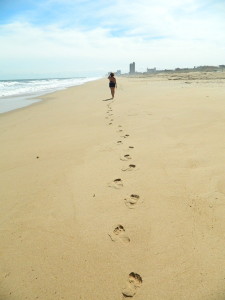
I don’t know about you, but I’ve discovered some interesting extra pounds recently. Not only am I eating more but I’m also moving less. It seems with each passing day, I’m older and rounder.
Sometimes I feel like I can’t win this battle. Then, I think about my situation and I realize that I can win this battle. I need to go on a diet.
The last time I went on a diet, I lost almost three dozen pounds. That was a long time ago. Almost thirty years ago, to be exact. I kissed carbs goodbye and the pounds went along with them.
This time I think I can have a more successful diet and my life will be easier, too. So…I’m taking this diet week-by-week. I plan to lose weight using newer, more effective, techniques. I plan to be healthier.
I hope to do some more interesting things along the way, too.
Will you join me?
I’m hoping to share effective weight-loss tips to make weight loss easier and more fun. I’m also hoping I’ll be able to keep the weight off!
For my first week on this diet, I’m thinking of ways to move more. I’m getting active for more energy.
I have a weekly zoom yoga/fitness class with Carolyn Abedor on Thursday mornings. I would prefer to have two classes each week with her but I’m working on Tuesday mornings when she offers her other class. I would love to rearrange my work schedule but, so far, have been unable to do so.
I spend a few minutes on a personal trampoline each day. Reflexologists love personal trampolines and I’m no exception.
At least twice daily, my 5-pound chihuahua walks me down the street. That will soon end when the snow comes. Taco can’t stand icy roads.
So, I’m seeking other active options.
I try to walk more at work and I like to walk more when I food shop.
A new goal is to put in about 300 extra steps every day – no matter what. I plan to add more physical activities over time until I’ve move these 300 steps to 30 minutes of daily exercise.
I’m searching for low-impact activities on exercise videos such as YouTube and Amazon. I’m planning to check out some videos at the library. I also plan to contact my area hospital to see what programs are available at its wellness center.

Thank you for allowing me to share this journey with you. I wish us all success in this quest for better health and a better weight.
Meanwhile, for this week, Let’s Move!
I’m hoping you’ll share this article with your preferred social media network.
Thurman Greco
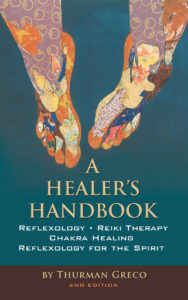
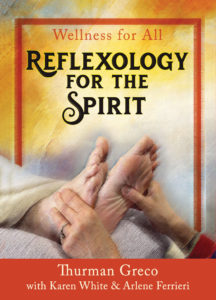

August 30, 2020 at 10:05 pm

Hello there, cerebral brain! It’s me, your abdominal brain. There are some important situations in life when we can work together. Actually, we work together daily.
I send you information all the time. I want you to know what happens in the abdomen where I live and work.
When I send red flags bubbling up, I hope you listen.
Example 1:
You are looking for a new job and may have an offer.
In this process, you sometimes when you need need more information.
You don’t have a job offer until you know the day you are expected to report to work, where you are expected to be on the start of your first work day, the name of the person you are to report to, and the amount of money you will be paid.
Can’t decide whether the job offer is for you? List all the positives about the job. Next, follow that list with a list of all the negatives. If the positives outweigh the negatives, you can begin to feel good about your offer.
If you don’t…think about what your abdominal brain is trying to tell you. Maybe, for the moment, you need to override your abdominal brain and use your head for a while. Or, maybe you need to listen to your abdominal brain and learn from its wisdom.
Example 2:
When you can’t eat or sleep, your abdominal brain is talking to you. Something isn’t sitting right for you.
You may have a stomach bug.
Or, you may also be hearing from your abdominal brain. What situation is causing physical stress? Is your abdominal brain working with your intuition to tell you it’s time to deal with it.
What decision-making skills do you need to reduce this stress and live a more comfortable life? Your pros-and-cons list can help here. You can also listen to your inner self which tells you what you need to know.
While you decide what to do, spend some time reducing your stress. As you lower your stress level, you may find yourself in a place where it’s easier to listen to your inner voice and your abdominal brain wisdom.
When this happens, you make way for a path to appear for you.
Example 3:
You encounter a situation or someone who is suffering.
Your abdominal brain appeals to you to help others. But, then, your cerebral brain or your friends and coworkers try to talk you out of it.
You experience objections: “I’m in a rush.” “This may be a scam.” “If I give this person money for food, she may just buy drugs with it.”
Think, for a moment, about a time when you were in need. How lonely was your situation? If someone stepped in to help, did your view of the world change?
This might be a time to pay your gratitude forward.
Example 4:
You are in a situation where a person is talking to you and suddenly your gut does flip flops or you get negative chills or you feel trapped.
This is not a time to dismiss your abdominal brain message. You are in a situation which is not good for you and your body knows it. This is a time to follow your gut.
Physically, remove yourself from the premises.
At a party or other group gathering? Leave. Now.
Getting ready to get on an elevator? Back off. Don’t get on the elevator. Go somewhere else instead.
Walking down a hallway and suddenly realize you are alone in a dark, public place? Get out of there immediately. Find people. Find lights.
In all of the above situations, you must make a stand for what your gut knows. It’s okay. This is one of the things your body is built to do.
Thanks for reading this blog post. You can connect with me on Facebook. If you have friends or know someone who might enjoy this post, please forward it.
If you are looking for more, please check out my books.
Thurman Greco


August 16, 2020 at 1:35 pm

It’s time!
THE VIDEO IS AVAILABLE NOW!
What began as reflexology class notes years ago has now become an informative and entertaining video just waiting for you!
One evening several months ago Karen White, Arlene Ferrieri and I drove out to Palenville to my publisher’s studio and very casually produced this video. Our intention is to offer a dialogue about reflexology which is easy to follow and use.
I hope you like it!
And, the price is sooo right. Simply go to
www.thurmangreco.com and click on videos.
There it is! It’s waiting for you and your donation. Every penny is destined to feed the hungry. No one received any payment for providing this video.
It is our hope that you will enjoy this video and find it informative as well as entertaining.

Please refer this blog post to your preferred social media network.
It is my dream that people will be as happy with this video as they are with the book, which is going into its third edition.
If you like this video, I hope you’ll send thoughts of gratitude to Karen and Arlene and everyone at Turning Mill who gave of their time with love.
Thurman Greco
June 25, 2020 at 12:57 pm
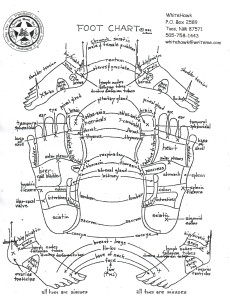
One nice thing I like about reflexology: it’s adaptable.
You don’t have to do a lot to prepare for a reflexology session. Don’t get me wrong. Your session preparation can be as elaborate as you can imagine and desire. It can include music, incense, essential oils, enfolding comforters, gentle lighting, and anything else you want to add to support your client partner.
But when the going gets tough, all you have to do is gently touch a person’s hands or feet for a few moments. Reflexology warm-ups and warm-downs are powerful. And there are few to no contraindications to touch a person.
And, a person doesn’t have to be lying by the side of the road to qualify for a gentle touch and nothing more.
Reflexology works well with other modalities. I love to add Reiki therapy and chakra healing but there are many more modalities that work fine. The choice is up to you.
On a gurney or roadside, I would certainly add Reiki but, honestly, it’s not necessary. Reflexology will do the job quite well.
Popular reflexology holds which are appropriate for gurney or roadside situations include simply holding the person’s hands or feet.
If I can’t make contact any other way, a hand placed on a shoulder can be effective.
I like to begin a session with a gentle solar plexus hold. After that, I might hold the person’s heels to offer comfort and support. Gently holding a person’s lymphatic reflexes for a minute can bring calm.
And, truthfully, Reflexology’s job is to bring about homeostasis. This happens in a session, no matter the circumstances.
At your table, reflexology will generate a different result during each session. That’s because your client is different every day on a cellular level. This daily difference produces a unique outcome at every session.
But, no matter the circumstance, reflexology is a heavy lifter in your toolbox. It will not let you down. After a session, don’t waste even a minute thinking you should have done something else or touched the person’s feet or hands another way. Your hands did the right thing at the right moment for this person.
Thanks for reading this article. Please refer it to your preferred social media network.
THANKS!
Thurman



June 7, 2020 at 8:01 pm


Once you see the soles of your feet as more than just the bottoms of your feet, you find your soul. You have a better understanding of the path you travel to a deeper consciousness.
I’m a reflexologist, teacher, writer, speaker, dowser. And, whether I heal, teach, write, speak, or dowse, my intention is the same.
I want us all to become more conscious of our unique selves.
I want us all to take charge of our own healing.
I want us all to release things we don’t need anymore. This will make room for changes that are important for our current time and place.
As we journey through life, we discover things about our selves that we never knew. We rediscover things we once knew but forgot. And, finally, we see things about our selves which we may have felt weren’t important but now realize they are.
My job is to help you find your feet.
Once you see the soles of your feet as more than just the bottoms of your feet, you find your soul. You have a better understanding of the path you are traveling to a deeper consciousness.
After awhile, everything falls into place. For some, this shortens the journey. For others, it takes months or even years.
Historical references to our feet as healing conductors can be found in the Physicians’ Tomb in Saqqara, Egypt in wall paintings dating back almost to 2400 BCE.
Ancient Chinese writings describe pressure points on thumbs and toes.
The Medicine Teacher Temple in Nara, Japan has stone carvings of Buddha’s feet.
In India, Vishnu paintings highlight points corresponding to reflexology points on feet.
Ayurveda medicine incorporates foot reflexology.
When I work a person’s feet, I feel as if I’ve opened a book filled with stories, all waiting to be told. This is the Language of Your Feet.
But, many of you already know this. You practice reflexology, or some other healing modality, either as a hobby or as a profession.
But, however we describe our Reiki therapy, our healing modalities, our Yoga classes, our music, our meditations – let us never forget: These are tools to use throughout life. They exist to get us through the tough times, the crises. They “get us down the road” as my grandmother used to say.
I’m so grateful we have these tools!
Thank you for reading this article. Please share this post with your favorite social media network.
Thurman Greco
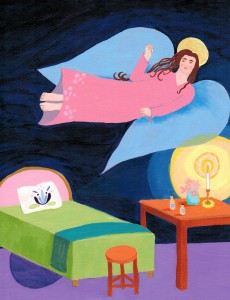
May 17, 2020 at 2:11 pm

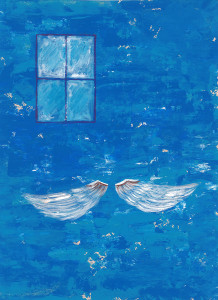
When I studied Reiki, Mary Ruth Van Landingham’s classes and handouts were my user’s manual. They didn’t even begin to approach all the things Reiki can do for us all. I think Mary Ruth Van Landingham did that intentionally because we each write our own user’s manual.
Reiki is a unique and individual experience for each of us. Our attunements are the user’s manual for each of us.
I learned to practice Reiki on my massage therapy clients. Each one got a 10-minute Reiki boost at the end of the massage therapy session. Because Reiki was still unknown in my area, none of them had ever heard of Reiki. Their introduction to Reiki came during the last ten minutes of a massage therapy session so it came at a moment when they were blissed out, pain free, and totally relaxed. Needless to say, they all loved their Reiki.
This was good for me also because I was new to Reiki and was fearful about the results. It took a while for me to become accustomed to how Reiki worked.
I worried that they might not receive a proper introduction. So, what happened was that both my clients and I learned together. For starters, we learned to recognize my warm hands when I introduced Reiki into a session.
Over time, I learned that my hands warmed up whether they were on another person’s body, or my body, or a plant, or a car. Or whatever.
I learned to trust Reiki. This was a huge life lesson for me. I suspect it is also an important lesson for others as well. Many people go through life never learning to trust people, places, or things.
When I teach Reiki, I don’t think I even mention the word trust. The word floats above the classroom like a gorgeous cumulative cloud. It’s there for all to see.
A wonderful thing to do is practice self-Reiki to experience a regenerative sleep, easy your headache pain, feel comfortable in your body, or simply feel grounded.
Actually, it’s not necessary to do anything with Reiki. Just enjoy having received your Reiki attunement(s). Rest. Heal. Let Reiki be with you.
You do not give up anything to learn Reiki. Reiki does not test you in any way. Reiki is not a cult. It does not come between you and your religious beliefs. You do not need to change any of your core beliefs.
Instead, Reiki opens doors and windows of learning, opportunity, and enlightenment for you…if that is what you want. For some, changes are apparent, immediate, and outward. For others, changes are slow, careful, discreet. It all depends on you, your situation, your life path.
Some students, after receiving their attunements, internalize their new skills. Reiki is private, intimate, internal.
Other students use their newfound skills, practice Reiki and give sessions at every opportunity.
Neither way is better than the other. In all cases, Reiki assists you on your path. For me, there is nothing more beautiful than to travel one’s life path.
Thank you for reading this blog post. Please refer it to your preferred social media network.
Thurman Greco

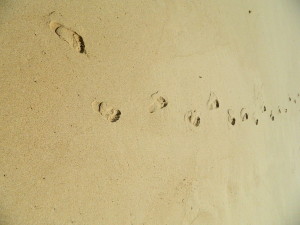
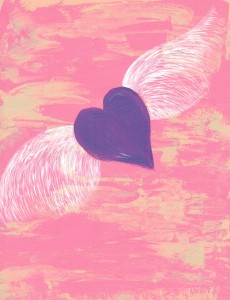
heart with wings
May 11, 2020 at 10:07 pm


In these stressful times, we all need a toolbox because we’re all healers. And, we never know when we might need to use our healing tools.
Reiki is a basic healing tool that works almost anywhere, anytime.
Many of you reading this blog use Reiki. But, many don’t. Reiki was the basic skill which put me on my healing path. That’s not to say that I wasn’t healing. I’d been a massage therapist since the 1980’s. But, there’s a difference.
Before Reiki and after Reiki.
I’ll never forget the first time I heard the word: Reiki.
I was at a weekend continuing education class in Clinton, New York, at a place called Spring Farm CARES. There were about two dozen students in the class. As we each introduced ourselves to the group, every student, except me, mentioned Reiki. They were all either Reiki practitioners, Reiki Masters, or Reiki Master Teachers.
I had no idea what that was. But, as I returned to my home in the Washington, D.C. metro area on Sunday, I decided to learn about Reiki. Reiki, at that time, was not mentioned much in my area. To be perfectly honest, it wasn’t mentioned at all. I called around.
I eventually found two friends who practiced Reiki. One of them, a massage therapist, was a Reiki Master Teacher for years and never shared her secret. The other friend studied Reiki but wasn’t using it because she believed that it healed people whether or not they wanted to be healed.
I found Mary Ruth Van Landingham in Vienna, Va. She had a shop, Terra Christa, with a classroom in a building behind the store. I learned nine different kinds of Reiki in that little building behind Terra Christa. She taught most of them.
At that time, there were few to no books about Reiki. Mary Ruth’s classes were filled with handouts. Now, when I teach Reiki, I offer handouts and encourage students to read any Reiki book that attracts them. Book stores everywhere carry several titles. Overall, there are hundreds to choose from.
I spent a good bit of the next two years studying in the little classroom nestled behind the store. Mary Ruth invited other trainers to give classes. I studied under Tom Rigler, Rev. Dan Chesbro, and many others before I finally moved to New York State.
“Reiki is a light touch offered to a clothed body.” is the definition Pamela Miles offered at a class at the New York Open Center.
Over the years, I learned that everyone who practices Reiki describes it differently. I invite my students to define the Reiki experience. Everyone has a different description and definition.
The word Reiki means Universal Life Force Energy. Practitioners refer to Dr. Mikao Usui, the man who brought Reiki into the 20th century. He practiced in Japan prior to World War II.
Other prominent Reiki teachers during this time include Mrs. Hawaya Takata, and Dr. Hayashi.
I like to include Frank Arjava Petter who, at the end of the 20th century, wrote a Reiki handbook “The Original Reiki Handbook of Dr. Mikao Usui.”
Reiki works on the physical level when the practitioner uses her warm hands.
The Reiki symbols work on the mental level.
Emotionally, Reiki sessions bring peace and calm.
The Reiki practitioner as well as the session itself, offer healing which impacts the energetic body.
But, beyond working on the different levels of a person, Reiki heals without judging. The healing energy of Reiki doesn’t care whether a person is religious or spiritual or not. The healing path of a person receiving or giving Reiki is nondenominational, positive, accepting.
Reiki heals.
Reiki never makes exceptions because of one’s beliefs, health condition, situation in time, lifestyle.
Reiki doesn’t ask about one’s religious or spiritual beliefs. Reiki never cares whether a person is Buddhist, Christian, Jewish, Muslim, Hindu…or anything else.
I have an invocation which I use often when offering Reiki to someone. It’s not original with me. And, I’ve used this prayer often for many years. I offer an apology here. I don’t know where it came from.
Whatever or wherever its origin, I send gratitude to the writer of this prayer. (Maybe, after reading this blog post, someone will know where it originated and share the information with me.):
I call upon the essence of the Healing Buddha and the Master Spirits of Reiki.
(At this point, I include any and all names that seem appropriate. I may include Jesus, St. Michael, St. Anthony).
I ask that my hands and heart be illuminated by the light of your unconditional love. I ask that this session proceed for ………………’s highest good. Amen
When I’m offering Lightarian Reiki, I go a step further. I include a request to seal the room in the prayer.
Reiki accepts.
Reiki does not ask that you give up anything in order to use its energy. Mary Ruth Van Landingham was a practicing Catholic. My friend Kathy is a devout Episcopalian. I teach Reiki to people of all faiths.
Reiki sets no one’s beliefs aside.
Thank you for reading this article. Please refer it to your preferred social media network.
Please join me for part two of this series of posts about Reiki.
Thurman Greco
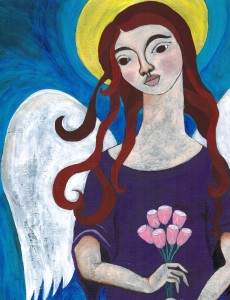
angel with flowers






















